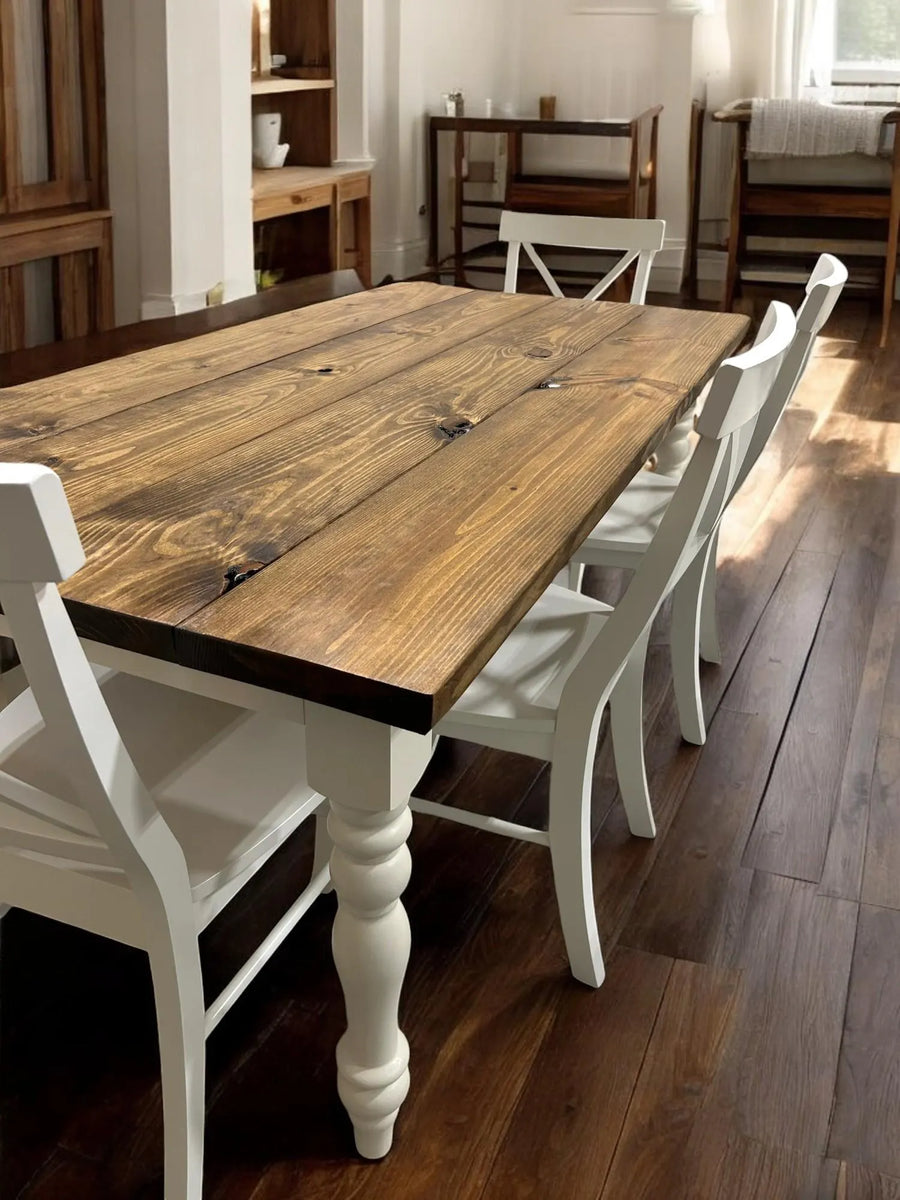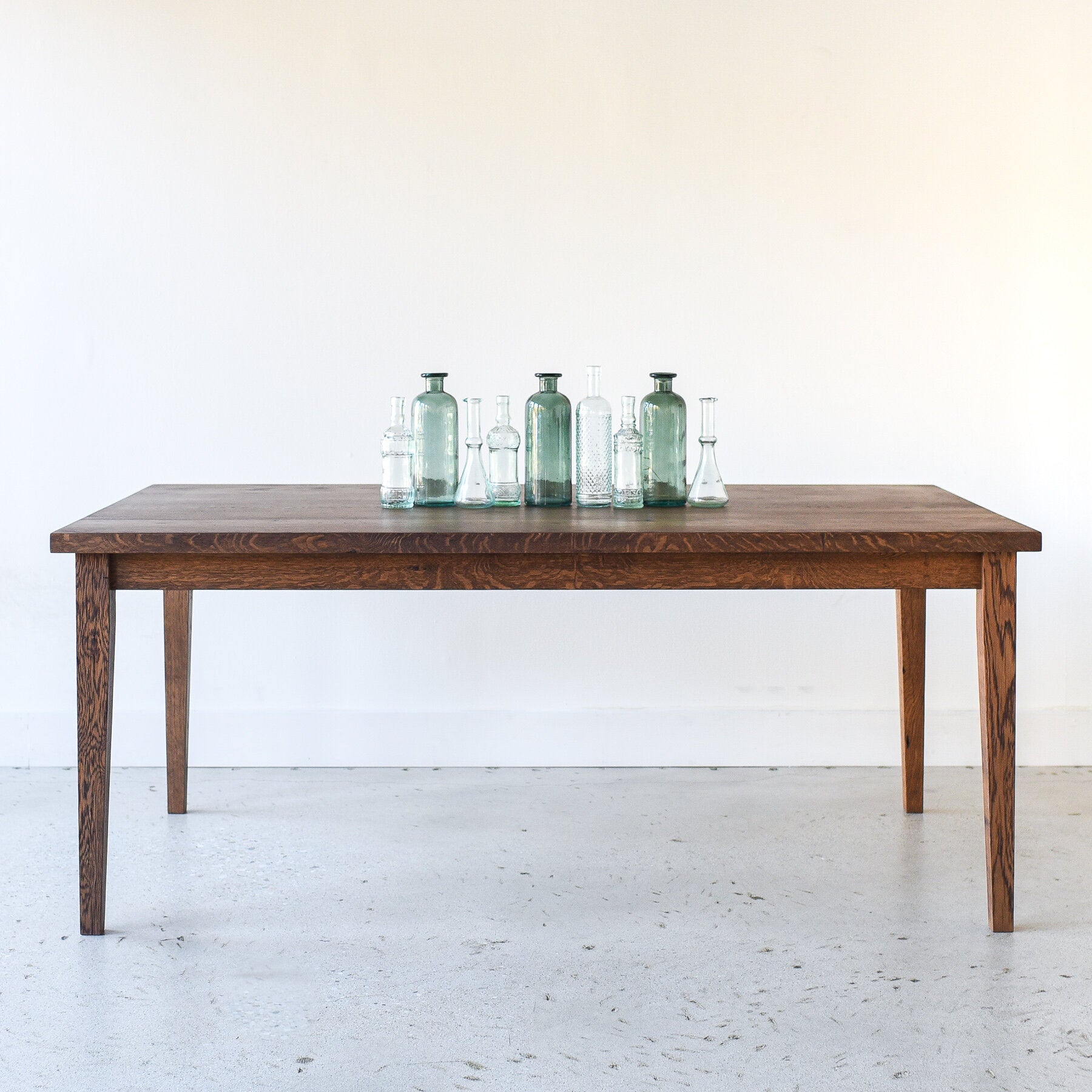Find Ageless Beauty in Handcrafted Dining Table Legs Wood Selections
Find Ageless Beauty in Handcrafted Dining Table Legs Wood Selections
Blog Article
Exploring the Different Kinds Of Table Legs Wood for Your Eating Area
The selection of dining table legs wood can profoundly influence both the aesthetic and functional high qualities of your dining room. Solid wood options, such as oak and walnut, supply a timeless look with unequaled durability, while engineered wood options supply innovative styles that simulate the richness of natural grains.
Solid Wood Options

Additionally, strong timber is renowned for its strength and long life. Unlike crafted materials, strong wood is less susceptible to warping and damage over time when appropriately maintained. This makes it an excellent choice for family members or those who frequently organize events. Each item of strong timber is unique, showcasing specific characteristics that contribute to the appeal and character of the eating table.
Additionally, strong timber can be ended up in various methods, varying from natural oils to discolored surfaces, enabling homeowners to customize their furniture to match their decoration. In recap, selecting solid wood for eating table legs not only guarantees architectural honesty but likewise boosts the aesthetic charm of the dining location, making it a worthwhile investment for any kind of home.
Engineered Timber Alternatives

Plywood, created from multiple layers of wood veneer, is specifically strong and secure, making it an exceptional selection for eating table legs. Its layered composition permits it to withstand adjustments in moisture and temperature much better than typical solid wood. MDF, on the various other hand, uses a smooth surface for paint or veneering, enabling developers to achieve a refined look while maintaining architectural honesty.
When picking crafted wood options, it is crucial to consider the designated use and wanted aesthetic. These products not just enhance the functionality of dining rooms but likewise enable for better layout flexibility, guaranteeing that contemporary and typical designs can exist side-by-side harmoniously.
Reclaimed Wood Includes
Recovered timber offers an one-of-a-kind blend of sustainability and character, making it a significantly prominent choice for eating table legs. Sourced from old barns, manufacturing facilities, and various other structures, reclaimed timber embodies a background that brand-new products merely can not duplicate. Each piece brings its very own tale, marked by unique imperfections, knots, and differing grain patterns, which contribute to a table's unique aesthetic allure.
In enhancement to its visual charm, redeemed wood is an eco-friendly alternative. By repurposing previously utilized materials, it lowers the need for new lumber, hence aiding to preserve woodlands and decrease waste. This lines up with a growing consumer preference for sustainable techniques in home furnishings.
In addition, redeemed timber is often much more long lasting than Learn More recently harvested wood due to its age. The natural drying process that recovered timber undergoes lead to a denser and stronger product, making it less at risk to warping and splitting. This boosts the durability of eating tables, enabling them to withstand the roughness of daily usage.
Softwood vs. Wood
When choosing eating table legs, comprehending the differences in between softwood and wood is important for achieving both visual and useful goals. Softwoods, stemmed from coniferous trees, such as ache and cedar, are characterized by their lighter weight and convenience of manipulation. They normally exhibit a more rustic look, making them ideal for casual or country-style eating spaces. Softwoods are typically much less sturdy than woods, which can be a consideration for families or those seeking durability in their furnishings.
On the other hand, hardwoods, sourced from deciduous trees like oak, maple, and cherry, are renowned for their density, strength, and resilience. The elaborate grain patterns and rich shades of hardwoods provide a click site sophisticated and timeless charm, making them suitable for official dining settings. While woods often tend to be extra costly and much heavier, their durability against damage usually warrants the investment.
Ultimately, the choice in between softwood and wood for dining table legs should straighten with your style vision, usage needs, and spending plan, making certain that your dining space reflects your personal style while remaining useful with time.

Therapies and coatings
The visual allure and long life of table legs can be significantly enhanced through various finishes and therapies. These procedures not just secure the wood from damage but also elevate its look, permitting it to enhance diverse interior designs.
One typical treatment is discoloring, which penetrates the wood and boosts its all-natural grain while adding color. Discolorations supply an abundant, stylish look, making it possible for home owners to match their furnishings with existing decoration. On the other hand, clear finishes such as polyurethane or varnish develop a safety layer without altering the timber's original tone, making sure toughness against damage.
In addition, all-natural oils, like tung or linseed oil, nourish the wood and offer a subtle luster, all while being environment-friendly. These oils permit the surface area to breathe, preventing dampness accumulation and potential bending.
For those seeking a rustic appeal, distressed or weather-beaten finishes can be used to create an aged appearance, adding personality to the piece. Eventually, the choice of coatings and treatments depends upon personal choice, preferred visual appeals, and the details wood kind, making it important to take into consideration these elements when picking dining table legs for your area.
Verdict
Solid woods, engineered alternatives, and reclaimed options each offer unique advantages, catering to different preferences and requirements. Eventually, the option of wood type ought to line up with preferred style, sturdiness, and ecological considerations, enhancing the overall dining experience.
The choice of dining table legs timber can greatly influence both the visual and useful high qualities of your eating room - Dining Table Legs Wood. Strong timber choices, such as oak and walnut, supply a traditional look with unparalleled durability, while crafted timber options provide ingenious designs that mimic the splendor of all-natural grains. Solid wood supplies a classic high quality that can raise the overall i thought about this layout of an eating area. Each piece of strong wood is distinct, showcasing individual characteristics that include to the appeal and character of the eating table
Moreover, reclaimed timber is usually a lot more resilient than newly collected wood due to its age.
Report this page